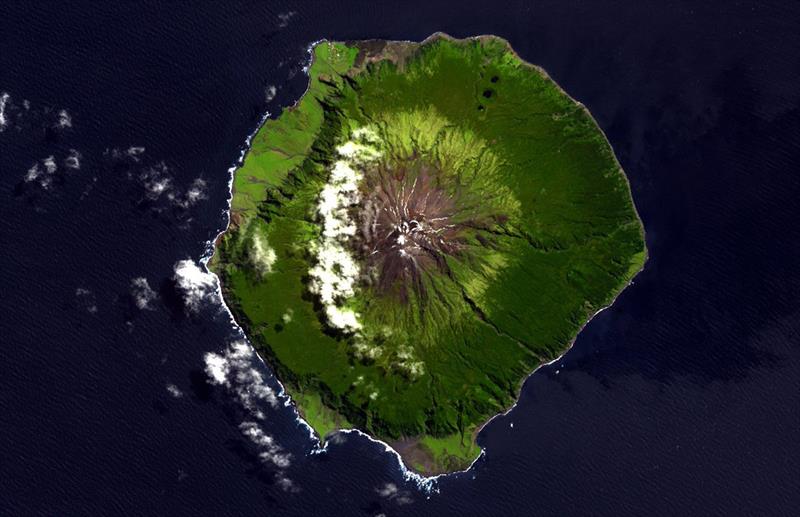
Tristán da Cunha, the door to the Southern Oceans
by Global Solo Challenge 14 Dec 2022 07:11 GMT

Tristán da Cunha - Global Solo Challenge © rscpb
The participants of the Global Solo Challenge (GSC) will have faced diverse conditions after having sailed approximately 5,000 nautical miles since their start in A Coruña. They will continue with their meteorological tactics through the South Atlantic as they approach Tristán da Cunha. Their objective will be to find as quickly as possible the prevailing winds from the west that will propel them through the Southern Oceans towards Cape Horn.
Ahead of the sailors in the GSC lies the longest and toughest stretch of the entire event. 12,000 miles in Atlantic, Indian and Pacific Oceans before they turn North after Cape Horn. This leg through the southern oceans will see them leaving the three great capes to port. Sailing at the latitudes of the Roaring Forties and the Howling Fifties, undoubtedly the Southern Ocean is the greatest challenge of this event.
The Tristán da Cunha archipelago comprises six islands, the main island, also named Tristán da Cunha, could be considered the most remote inhabited place on earth as it is located furthest from any other populated location. Its only settlement is Edinburgh of the Seven Seas, located on the north coast of the main island. The other five islands are essentially uninhabited, with the single exception of a meteorological station located on the south-east coast of Gough Island. The remaining four islands forming the archipelago are: Inaccessible, Nightingale, Stoltenhoff, and Middle island. The archipelago stretches from the southern tip of Gough Island at 40º22'S / 9º55'W to the north of Tristan da Cunha at approximately 37º07'S /12º17'W.
These remote islands in the South Atlantic were, until not long ago, little known. Only the ships passing through the archipelago on their routes to South Africa and the Indian Ocean, or those that went directly to supply the locals on those islands, had some knowledge of them.
On November 21, 2011, during the Volvo Ocean Race, the open 70 Puma Ocean Racing broke her mast. At the time of the breakage, the closest refuge was the island of Tristán da Cunha, about 700 miles away. Seeking refuge there, they waited to be picked up by a freighter and transported, crew and boat, to Cape Town. This incident received international press coverage, bringing awareness of Tristán da Cunha to the general public.
There have historically been cases of sailboats seeking refuge at Tristán da Cunha when weather conditions complicates the route to destinations further east. GSC sailors will also be able to count on Tristán da Cunha in the case of whatever extreme circumstances or situations they may be facing. However, the island provides practically zero possibilities of refuge, except for Edinburgh of the Seven Seas, given its wild nature and exposure to the force of the ocean.
The weather in the area is dominated by winds from the NW/W/SW. The NW and W are the most predominant, followed by those from the SW and from the N. Winds from the S can occur occasionally while winds from other cardinal directions are scarce. Winds typically blow with an average intensity of 4/5 on the Beaufort scale. The exception being the rare Easterly wind. In the southern hemisphere summer, calms are practically non-existent, but neither are winds greater than force 7, except for the passing depressions moving through those latitudes.
Information regarding winds, intensity, direction, frequency of storms or calms, and other meteorological phenomena, are based on statistical studies. These studies are reflected in publications such as pilot charts and navigation books.
However, average conditions do not cover the full range of possibilities, and extreme weather can occur in any season.
Climate change is influencing historical meteorological weather patterns adding a new level of uncertainty to GSC skippers. Weather analysis will be one of the most important tasks for the GSC skippers.
Tristan da Cunha represents a crucial psychological rounding mark in the route for GSC participants who will leave behind the milder conditions of the northern section of the South Atlantic and will start their journey in the Big South. Let's hope no one will need to stop for repairs in this remote islands.